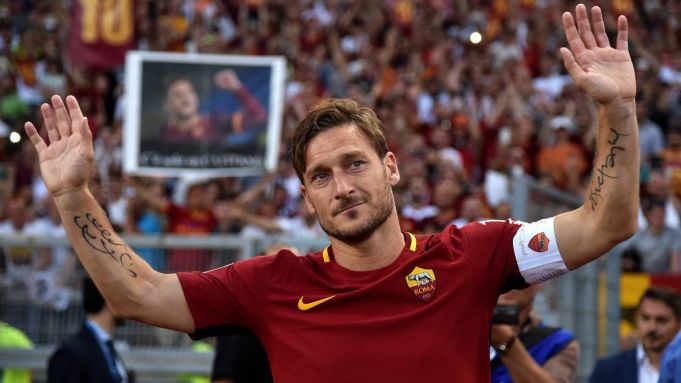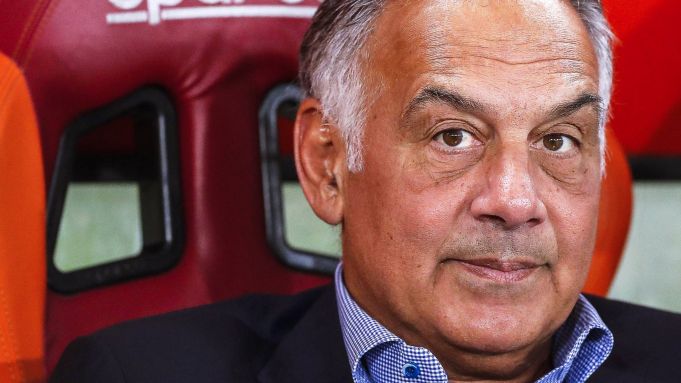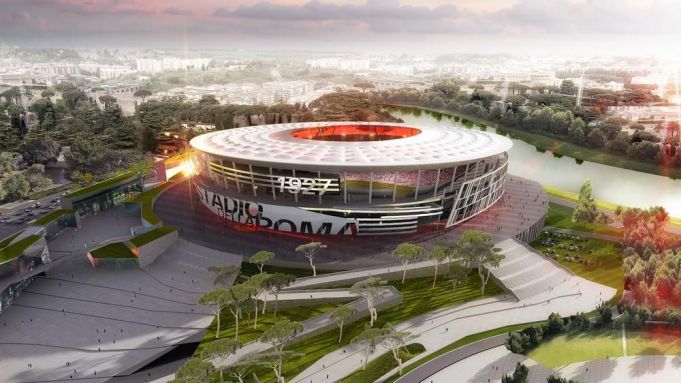AS Roma seeks to carry the spirit of an “impossible dream” into the new season as the Rome club’s popularity soars off the field.
Blessed with an impassioned support base and fuelled by a city rivalry among the most ardent in world football, AS Roma football club has a responsibility to push boundaries and strive for ambition. For hundreds of thousands of supporters, the club is not simply a name-check, it is a culture – and to some fans, almost a religion.Testaccio roots
Founded in 1927, AS Roma was based at Campo Testaccio from 1929 until 1940 when the club moved to the present location of what is still called the Stadio Olimpico, which has been through at least two major redesigns, one for the 1960 Rome Olympic Games (hence the stadium's name) and again for the World Cup Italia '90. Campo Testaccio has long since been abandoned but its surrounding neighbourhood remains an AS Roma stronghold.
Lazio rivals
AS Roma shares the Stadio Olimpico with arch-rivals Lazio as well as the national rugby team. Support for the city's two football teams has divided large swathes of the city and the rivalry is referred to as the “Derby della Capitale”. The teams met for a first time in 1929 and have played 170 official matches – with Roma winning 64.

However, football goes on and Roma started life without their former talisman by writing new history last season. For Roma supporters, 10 April 2018 is a date that will be etched in their minds for years to come. It was a night where the seemingly impossible dream became a reality.
Giallorossi
The Giallorossi trailed Spanish champions Barcelona following a 4-1 defeat in the opening leg of their Champions League quarter-final encounter, and the footballing world expected another defeat when the two teams recommenced battle at the Stadio Olimpico. But football is a funny old game.
Roma’s star striker Edin Dzeko, who had scored a vital consolation goal in Barcelona the previous week, laid the foundations of hope within six minutes of the start. Hope transcended into belief when club captain Daniele De Rossi struck home a penalty kick. Then came the dreamland. Defender Kostas Manolas scored a header in the final ten minutes to electrify the Stadio Olimpico. The goal, which saw Roma draw 4-4 over the two legs, capped one of Italian football’s greatest club comebacks and saw the Rome side go through to the next round.

The run to the last four in one of the world’s greatest club competitions has put Roma back into the global sphere of elite clubs among supporters across the world. However it has not just been on the pitch that Roma has seen significant progress over recent years.
Following the acquisition of the club by Boston billionaire James Pallotta’s parent company Keep Roma Holding, the club has scaled up its interests internationally, promoting supporter engagement from every angle. “We didn’t have a commercial team, we didn’t have a digital team, we didn’t have a TV station, we didn’t have a radio station, we didn’t have studios. Now we have those things,” Pallotta said earlier this year. “If you want to be a consistent top 10 player in the world, you’ve got to have the revenues.”
James Pallotta
On social media and online, the club’s media team has worked tirelessly to forge a slice of the English-speaking market share and, they say, “to keep those out of reach of the club in a communicative distance”. This has produced a campaign of diverse social posts from the bog-standard to the plain wacky. From innovative transfer announcements to sarcastic messages to other clubs, the infamous “Roma Admin” has delivered on the big stage itself – attracting a new generation of football supporters and helping to increase match attendances by almost 4,000 per game in the last 12 months.

New stadium
The grandest of expansions in Pallotta’s plan, however, is the proposed construction of a new stadium for the Giallorossi. Plans surfaced in 2014 for the construction of the Stadio della Roma and adjoining entertainment complex in the city's south-west Tor di Valle suburb – with the club keen on selling naming rights for the stadium in the future. When built, Pallotta has stated that the stadium will be the “most used facility in all of southern Europe.”
Progress has had its hold ups, with Rome's mayor initially rejecting the proposal in February 2017. However Raggi gave her support to a scaled-back scheme after AS Roma agreed to a 60 per cent reduction of the proposed surrounding park, which meant dropping plans for three high-rise office towers designed by American architect Daniel Libeskind.

Roma supporters could be settling into their new surroundings as early as 2020, but a police investigation in mid-June threatened to delay the works. Nine high-profile business and political figures were arrested overalleged corruption relating to contracts for the construction of the stadium – although AS Roma has distanced itself from the allegations and nobody at the club is under investigation.
Future
Outlining his vision for the future, Pallotta says: “We know we’re never going to get a Barcelona fan to switch to become a Roma fan, but our goal from day one is that if there are three billion football fans in the world, we aim to be everybody’s second favourite team in the world. So if I can get one per cent of that three billion I’ve got 30 million, and if I could get those 30 million to spend on average just €5, which isn’t even a hat, then that’s €150m of incremental revenues and that’s a lot."
Such finances are required to consistently match up against the best of Europe with television rights in the English Premier League and Spain’s La Liga sky-rocketing year on year.
Serie A
As the focus returns to the pitch, the challenge for the 2018/19 season is of transferring the energy of continental joy into toppling the dominant force of Juventus in Serie A. Juventus has won the last seven Serie A titles, taking its overall haul to 34. Roma, on the other hand, has been crowned champions on just three occasions. The last title arrived at the end of the 2000/01 season.
There is a sense, however, that Roma is on the crest of a wave, powered by positive public feeling. Last season’s exploits have already rubbed off on the playing squad members available to head coach Eusebio Di Francesco.
The club cashed in on its Champions League success and secured a multi-million euro shirt sponsorship deal with Qatar Airways – and that has been directed towards adding depth to an already exciting squad – spearheaded by goal machine Edin Dzeko.
Monchi
Ramon Rodriguez Verdejo, commonly known as Monchi – Roma’s director of football – has once again added to his reputation as a “transfer genius” in the convoluted marketplace of footballers with a succession of stellar recruits.
Argentinean playmaker Javier Pastore, 29, has signed from French champions Paris Saint-Germain while exciting winger Justin Kluivert, son of Netherlands legend Patrick, signed a contract until 2023 after arriving from Ajax.
It hasn’t all gone Roma’s way, though. Star player Radja Nainggolan has moved to Inter Milan – although Roma gained Italian international Davide Santon and youth hope Nicolo Zaniolo as part of the deal with Inter.
Looking ahead to the coming season, it will be a difficult task for the young blood of Roma to overcome the dominance of Juventus. But if last year told us anything, it was that nothing is impossible.
By Ed White
This article was published in the September 2018 edition of Wanted in Rome magazine.


















